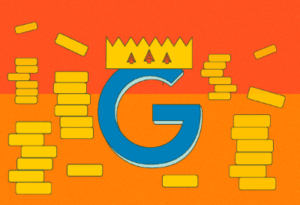Our recent article on small business marketing and rising media costs focused on the opportunity to move past the competition and earn more market share. But what about the times when rising per-click charges force you completely out of the picture?
For our paid search clients, we’ve seen per-click charges for competitive search terms range from just pennies to $75 or more. Paid search platforms like Google Ads sell keywords on an auction-style bidding system, representing what the market is willing to pay. If you get priced out of the market, you need to decide on the next best place to compete. For that, we need to pull back and look at the bigger marketing picture for more opportunities.

Narrowly select keywords.
You may have an opportunity to be smarter about paid search than your competition. Do the customers who ultimately buy your product search for you using a different term, phrase, or feature that you offer? For example, say you sell fans. Rather than pay more to compete with other companies selling fans, add a descriptive, such as remote control fans. The more you know about your customer’s journey and the way your best customers differentiate their search phrases to fit your unique selling proposition, the more you can narrow your paid search campaign to outsmart the competition.
Match your audience to your search platform.
It’s worth mentioning that Google Ads isn’t the only ad platform out there. Platforms like AdRoll, or a Demand Side Platform give you options to target your audience outside of the Google universe. Or choose a different search engine to advertise on, like Bing. Bing users are slightly older with an average age of 45, are more likely to be married (46%), and may spend 35% more when shopping online compared to Google users. Granted, Bing accounts for only 2.47% of the global search market (compared to 86.8% for Google). But if your audience matches Bing’s sweet spot, it may be a viable alternative.
See the gaps in the paid search competition.
When you can’t stand toe to toe and fight the heavyweight champ, you get smarter about your game plan. Observe your competitors and know where they’re focusing their marketing budget. You may notice one dominating the paid search space, another spending more time and attention on SEO, a third advertising on Facebook. Look for gaps in the competition to notice which ad platforms are being overlooked. As long as your audience is there, your message is clear, and your customers are likely to take action, you can exploit that gap to your benefit.
Go local and localize your Search Engine Optimization.
Research among small business marketers shows 75% of local-intent mobile searches result in offline store visits within 24 hours. Local searches are those like “remote control fans near me.” When paid search is out of range, take a look at the organic search opportunity to compete locally with SEO. A localization strategy can help your local customers find you in organic search results and appear immediately under your paid search competitors. There’s power in appearing to be the closest match geographically.
Go fish upstream.
Think of your marketing like a sales funnel. At the widest part of the funnel is awareness. The narrow end is where people are ready to purchase. When it costs too much to fight for those at the narrow end of the funnel, move upstream to the awareness side. Pinterest isn’t as much a social network as it is a search engine. Searchers using Pinterest know they want something in your product category, but aren’t yet familiar enough with individual brands to do a search using brand names. They learn about the market through the pins they find. Hook them at the awareness stage and you’ll have an easier time converting them when they’re ready to make a buying decision.
Get medieval on their assets.
As digital marketing options continue to expand, traditional marketing channels can get overlooked. Your customers may still read print magazines. They still see billboards, listen to or stream the radio, and get mail. Have you noticed that truly targeted direct mail stands out more in your mailbox than the email in your inbox? Marketers gravitate to the latest tools and technology, but should avoid the temptation to leave channels that perform well for the appeal of the shiniest new tech.
Be bold in your message.
They may call you disruptive. They may say you’re a brash upstart. Throughout brand war history the underdog has been able to beat the well-established brand by being loud and bold with their message and competitive differentiators. Who would think an upstart like Mint Mobile could stand out against cell plan giants? For inspiration, shave with your Dollar Shave Club razor, launch a Tesla into space, and read a few searing Tweets from Wendy’s. If well-behaved women rarely make history, what chance do well-behaved brands have?
Build a small business marketing plan with impact.
When EAG builds a marketing plan for a client, we approach it with a first-dollar mentality. That is, where is the best place to put your first dollar, second dollar, and so on. This helps us stay flexible for our small business marketing clients. It also helps us prioritize marketing tactics by impact. Fully fund the most important tactics first to align your best marketing options before moving on to those with higher risk and more competition.
When you need to pivot away from paid search marketing, it takes a little creativity backed by solid marketing strategy. Ready to compete again? Let’s talk.
